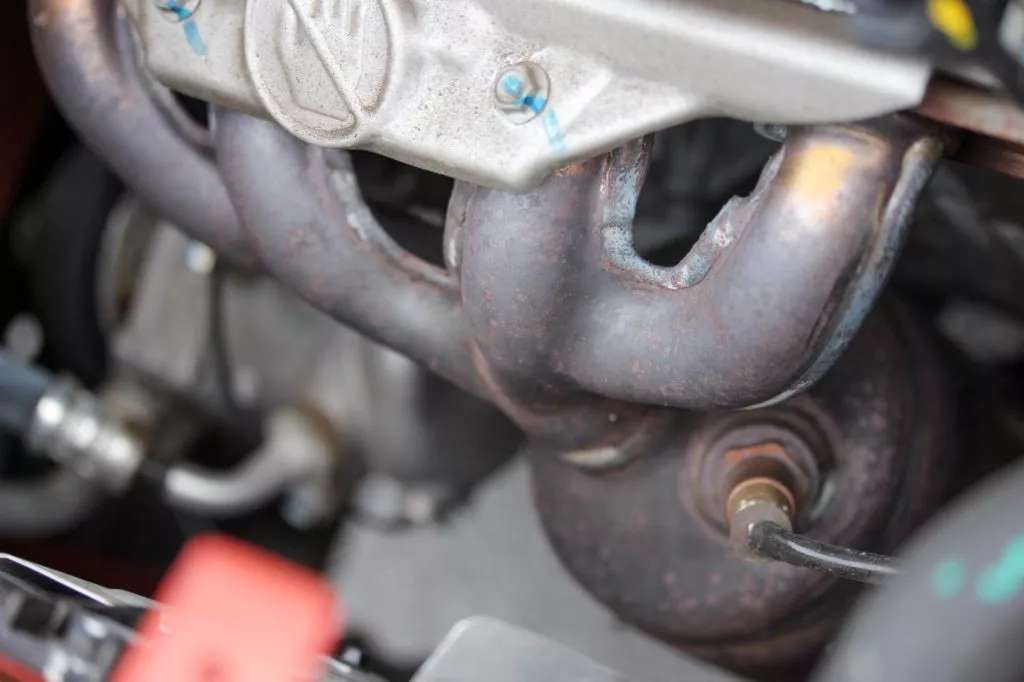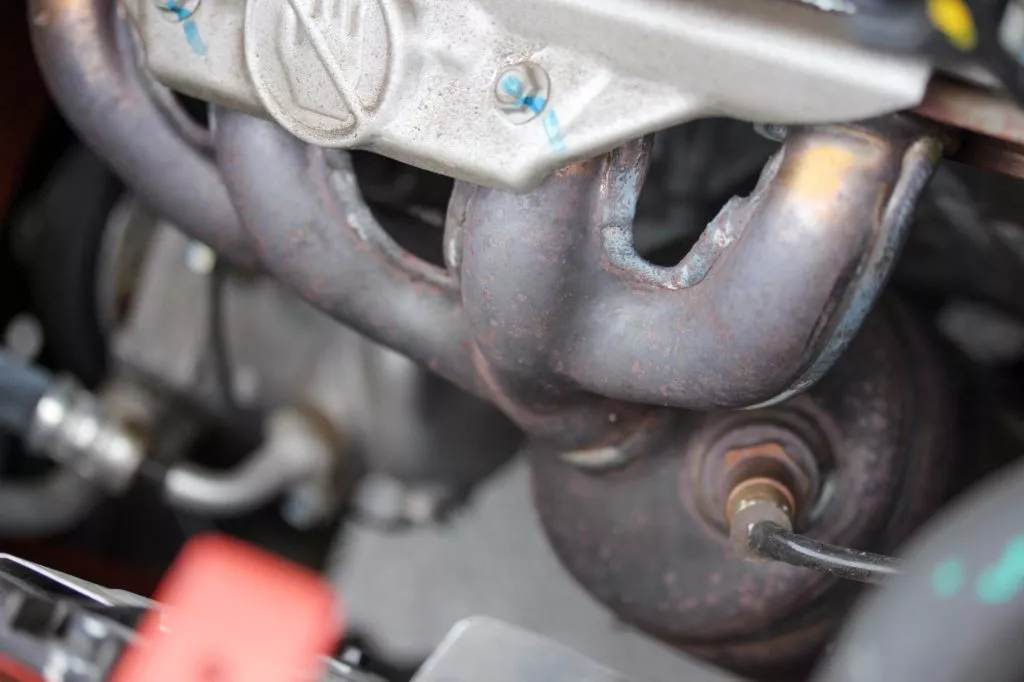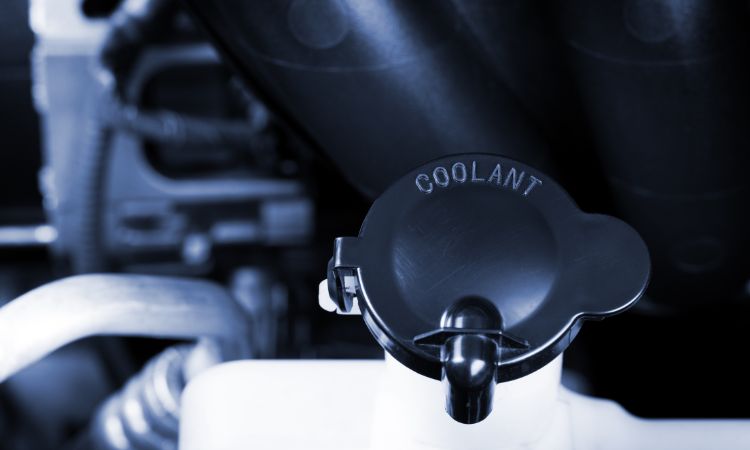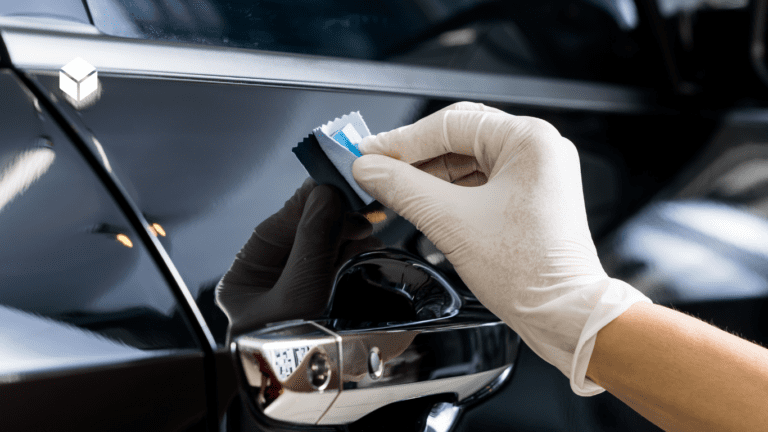how to test for exhaust leaks

Introduction
Exhaust leaks can be a significant issue for vehicle owners, and it is essential to understand why it is important to test for these leaks. The exhaust system plays a crucial role in the overall performance of a car, and any leakage can not only affect the engine’s efficiency but also pose a risk to the occupants’ health. In this article, we will discuss the significance of testing for exhaust leaks and how the exhaust system functions.
Why it’s important to test for exhaust leaks
Testing for exhaust leaks is vital for several reasons:
1. Health hazards: Exhaust leaks can expose vehicle occupants to toxic gases such as carbon monoxide (CO). This gas is odorless, invisible, and highly dangerous. A leaking exhaust system can allow CO to enter the passenger compartment, leading to symptoms like headaches, dizziness, nausea, and even death in severe cases. Regular testing for exhaust leaks can help ensure the safety of both the driver and passengers.
2. Environmental impact: Leaking exhaust can also contribute to air pollution. Harmful gases emitted from the engine, such as nitrogen oxides (NOx) and hydrocarbons (HC), can escape through the leaks and contribute to smog formation. By detecting and repairing exhaust leaks, vehicle owners can play their part in reducing air pollution.
3. Performance issues: Exhaust leaks can affect the engine’s performance, leading to reduced power and fuel efficiency. When there is a leak in the exhaust system, the engine may have to work harder to push the exhaust gases out. This extra strain on the engine can result in decreased power output and increased fuel consumption. Regular testing for exhaust leaks can help identify any performance issues and allow for timely repairs.
Understanding the role of exhaust systems
To appreciate the importance of testing for exhaust leaks, it is crucial to understand the role of the exhaust system in a vehicle:
1. Removing waste gases: The primary function of the exhaust system is to safely remove waste gases produced during the combustion process. These gases, including carbon dioxide (CO2), water vapor (H2O), nitrogen (N2), and other harmful emissions, are directed out of the engine through the exhaust pipes.
2. Noise reduction: The exhaust system also plays a significant role in reducing engine noise. The muffler, located in the exhaust system, uses various chambers and baffles to dampen the sound produced by the engine. A leak in the exhaust system can disrupt this noise reduction process, resulting in louder engine noises.
3. Catalytic converter: Modern vehicles are equipped with a catalytic converter, which is a crucial component of the exhaust system. The catalytic converter reduces harmful emissions by converting them into less harmful substances through chemical reactions. An exhaust leak before the catalytic converter can reduce its effectiveness and lead to higher emissions.
In conclusion, testing for exhaust leaks is essential for various reasons. It helps ensure the safety of vehicle occupants by preventing the entry of harmful gases into the passenger compartment. Additionally, detecting and repairing leaks contributes to reducing air pollution and maintaining the engine’s performance. Understanding the role of the exhaust system provides further context as to why exhaust leak testing is significant. Vehicle owners should prioritize regular testing for exhaust leaks and promptly address any issues to ensure the optimal functioning of their vehicles.
Signs of an Exhaust Leak
Detecting black soot as a common sign
One of the most common signs of an exhaust leak is the presence of black soot. If you notice black soot on any connection or areas of the pipe, muffler, or other components of the exhaust system, it is a clear indication of a leak. The black soot is the result of the escape of exhaust gases from the system.
Using pliers to check for thin areas
To determine if there is a potential exhaust leak, you can use a pair of large pliers to gently squeeze different areas of the exhaust pipe. If the pipe flexes or compresses easily, it is a sign that the pipe is thin and needs attention. Thin areas in the pipe can lead to leaks and should be addressed promptly.
The Role of Exhaust Systems
Before understanding the symptoms of an exhaust leak, it is important to comprehend the role of the exhaust system in your vehicle. The exhaust system is responsible for the safe removal of harmful gases produced during the combustion process. It plays a vital role in maintaining the performance, fuel efficiency, and overall safety of your car.
Common symptoms of an exhaust leak
Here are some common symptoms that can indicate an exhaust leak in your vehicle:
– Decreased fuel efficiency: If the exhaust is leaking near the manifold, it can impact the efficiency of your vehicle by causing a decrease in mileage. This happens because the leak bypasses the sensors that read incoming and outgoing oxygen, resulting in an excessive amount of fuel being burned. It is crucial to address exhaust system leaks promptly to maintain optimal fuel efficiency.
– Louder exhaust noise: An exhaust leak can result in a louder than usual exhaust noise. You may notice a hissing or popping sound coming from the engine area or underneath your vehicle. Any unusual and increased noise from the exhaust system should be inspected to identify and fix potential leaks.
– Strong odors: Leaking exhaust fumes can emit a strong and unpleasant odor, often described as a rotten egg smell. If you notice a foul smell coming from your vehicle’s exhaust, it is a sign that there may be a leak in the system.
– Engine performance issues: An exhaust leak can have an impact on the overall performance of your engine. You may experience a decrease in power, acceleration, or the engine may run rough. These symptoms could be a result of a leak affecting the air-fuel mixture and engine combustion.
It is important to address any signs of an exhaust leak promptly to prevent further damage to your vehicle and ensure your safety on the road. If you suspect an exhaust leak, it is recommended to consult a professional mechanic who can inspect and repair the exhaust system as needed.
Remember, a properly functioning exhaust system is crucial for the overall performance, fuel efficiency, and safety of your vehicle. Regular maintenance and prompt attention to any potential leaks or issues can help ensure the longevity and reliability of your car’s exhaust system.
Tools Needed for Testing
The importance of having the right tools
Having the right tools for testing exhaust leaks is essential for efficient and effective diagnosis. It can save time, effort, and reduce the risk of comebacks. Without the proper tools, diagnosing exhaust leaks can be challenging and may result in inaccurate or incomplete assessments.
Recommended tools for testing exhaust leaks
To successfully diagnose exhaust leaks, it is recommended to have the following tools:
1. Smoke machine: A diagnostic smoke machine is an essential tool for detecting exhaust leaks. It works by introducing smoke into the exhaust system, allowing leaks to be easily identified by observing where the smoke escapes.
2. Pressure gauge: Some smoke machines come equipped with an output pressure gauge. This allows for performing a pressure decay (leak down) test, which helps diagnose very small leaks and quickly confirm successful repairs.
3. Pliers: Large pliers can be used to gently squeeze different areas of the exhaust pipe. If the pipe flexes or compresses easily, it indicates thin areas that may lead to leaks and should be addressed promptly.
4. Spray bottle with soap and water mixture: A spray bottle filled with a mix of soap and water is useful for identifying exhaust leaks. The soapy mixture creates bubbles when applied to areas suspected of having leaks, making it easier to pinpoint the exact location of the leak.
Having these tools on hand will greatly facilitate the process of diagnosing exhaust leaks and ensure accurate and efficient repairs.
Remember, if you’re not comfortable or experienced in diagnosing and repairing exhaust leaks, it is recommended to consult a professional mechanic. They have the expertise and specialized equipment to properly diagnose and repair exhaust system issues.
Taking prompt action to address exhaust leaks is crucial for maintaining the performance, fuel efficiency, and safety of your vehicle. Ignoring exhaust leaks can lead to further damage and potential hazards on the road. Regular maintenance and inspections are key to ensuring the longevity and reliability of your car’s exhaust system.
By having the right tools and consulting a professional when necessary, you can effectively diagnose and resolve exhaust leaks, saving time, money, and ensuring the optimal performance of your vehicle.
Testing Method 1: Visual Inspection
Step-by-step guide on visually inspecting the exhaust system
Performing a visual inspection is the first step in detecting exhaust leaks. Here is a step-by-step guide on how to visually inspect the exhaust system:
1. Start by visually inspecting the exhaust manifold for any visible signs of cracks, warping, or damage. Check for exhaust leaks, carbon deposits, or any other visible issues.
2. Look for soot deposits or black marks around the connections and areas of the exhaust pipe, muffler, and other components. These are clear signs of an exhaust leak.
3. Examine the entire length of the exhaust pipe, including the bends and joints, for any signs of rust, corrosion, or holes. These can also indicate potential leaks in the system.
4. Check the exhaust hangers and supports to ensure they are securely attached and in good condition. Loose or damaged hangers can cause the exhaust system to shift and potentially create leaks.
5. Inspect the gaskets and seals for any signs of wear or damage. Faulty gaskets can lead to exhaust leaks and should be replaced if necessary.
Identifying areas of potential leaks
During the visual inspection, it is essential to identify areas that are more prone to exhaust leaks. Some common areas to pay special attention to include:
– Exhaust manifold: Check for cracks, warping, or loose connections between the manifold and the engine block.
– Exhaust pipe joints: Inspect the connections between the sections of the exhaust pipe. Look for signs of rust, corrosion, or loose connection.
– Muffler: Examine the muffler for any visible damage, including holes, rust, or loose welds.
– Catalytic converter: Check for any signs of damage, such as cracks or leaks, in the catalytic converter.
– Exhaust hangers and supports: Ensure that all hangers and supports are securely attached and in good condition.
By performing a thorough visual inspection and identifying potential areas of leaks, you can take the necessary steps to address and repair any issues with the exhaust system.
Testing Method 2: Exhaust Leak Test
Using a smoke machine or leak detection solution
Another method to detect exhaust leaks is by performing an exhaust leak test. There are two common approaches to conducting this test: using a smoke machine or an approved leak detection solution.
1. Smoke machine: A smoke machine is a device that generates a controlled amount of smoke. By introducing the smoke into the exhaust system, you can visually observe any leaks. The smoke will escape through any openings or cracks in the system, making it easier to identify the source of the leak.
2. Leak detection solution: Alternatively, an approved leak detection solution can be used. This solution is sprayed along the exhaust manifold and other components of the exhaust system. When there is a leak, the solution will bubble or foam, indicating the presence of an exhaust leak.
Both methods can be effective in detecting exhaust leaks, and the choice between them depends on personal preference and availability of equipment.
Testing Method 3: Performance Evaluation
Monitoring the engine’s performance
After conducting the visual inspection and exhaust leak test, it is crucial to monitor the engine’s performance during operation. This step allows you to assess any changes or irregularities that may indicate an exhaust leak.
Pay attention to the following factors while monitoring the engine’s performance:
– Listen for any unusual noises, such as hissing, popping, or increased exhaust noise.
– Observe any changes in the engine’s power, acceleration, or smoothness.
– Monitor the fuel efficiency of the vehicle. A decrease in mileage can be a sign of an exhaust leak.
If any of these symptoms persist or worsen, it is recommended to consult a qualified technician who can further diagnose and repair the exhaust system.
Remember, taking early action to address exhaust leaks is essential to ensure the optimal performance, fuel efficiency, and safety of your vehicle. Regular inspections and maintenance can help prevent costly repairs and extend the lifespan of your exhaust system.
Testing Method 2: Rag Test
Procedure for using a rag to pressurize the exhaust
If the visual inspection and exhaust leak test did not reveal any leak, another method to detect exhaust leaks is by using a rag to pressurize the exhaust system. Here is a step-by-step guide on how to perform the rag test:
1. Start by ensuring that the engine and exhaust components are cold to avoid creating steam.
2. Take a shop rag and securely insert it into the tailpipe. This will temporarily block the tailpipe, increasing the pressure in the exhaust system.
3. With the rag in place, start the engine and let it idle for a few minutes. Be cautious not to leave the rag in place for an extended period as it can restrict the engine’s airflow and cause other issues.
4. While the engine is idling, listen for any hissing or popping sounds coming from the exhaust system. These noises can indicate the presence of an exhaust leak.
5. Gently wiggle the exhaust tubing under the car while the engine is running. If any components are loose, they may be the source of the leak.
Determining the location of the leak
Once you have identified the presence of an exhaust leak using the rag test, it is essential to pinpoint the location of the leak. Here are some indicators that can help you determine the source of the leak:
– Look for black carbon deposits near the exhaust leak. These deposits can indicate the presence of an exhaust leak.
– Spray a mixture of one part kitchen soap to ten parts water near the suspected leak area. If bubbles appear, it confirms the presence of an exhaust leak.
– If you are unable to locate the leak visually, you can try feeling for the leak using your hands. Be cautious not to touch any hot metal parts to avoid burns.
Remember, exhaust leaks can have a significant impact on your vehicle’s performance, fuel efficiency, and safety. If you are unsure or uncomfortable performing the tests yourself, it is recommended to consult a qualified technician who can diagnose and repair the exhaust system.
Regular inspections and maintenance play a crucial role in detecting and addressing exhaust leaks early on, preventing further damage and reducing the risk of costly repairs. By following the proper testing methods and taking prompt action, you can ensure the optimal performance and longevity of your vehicle’s exhaust system.
**Testing Method 3: Pressure Testing**
Using a pressure gauge to identify leaks
Pressure testing is another effective method for detecting exhaust leaks in a vehicle’s exhaust system. This method involves using a pressure gauge to measure the pressure of the air entering the cylinder and the percentage of air escaping or leaking from the system.
A pressure gauge is connected in place of the spark plug, and the engine is cranked to create a pressure reading. By comparing the pressure reading to the manufacturer’s specifications, you can determine if there are any leaks in the system.
Steps for conducting a pressure test
Performing a pressure test on the exhaust system requires the following steps:
1. Start by ensuring the engine is turned off and has cooled down before beginning the pressure test.
2. Locate the spark plug for the cylinder you want to test and remove it carefully using a spark plug socket.
3. Connect the pressure gauge to the spark plug hole and make sure it is securely fastened.
4. Once the pressure gauge is in place, slowly crank the engine using the starter motor. This will create pressure within the cylinder, which will be measured by the gauge.
5. Record the pressure reading and compare it to the manufacturer’s specifications. If the reading is lower than the recommended range, it indicates a possible exhaust leak.
6. To further identify the source of the leak, you can use a smoke machine or an approved leak detection solution. By introducing smoke or the solution into the exhaust system, any leaks will become visible.
7. Repeat the pressure test and record the pressure reading after introducing the smoke or leak detection solution. Any significant changes in pressure can help pinpoint the exact location of the leak.
8. Once the pressure test and leak identification are complete, it is essential to address and repair any identified leaks following the manufacturer’s guidelines or consulting a qualified technician.
By conducting a pressure test, you can accurately diagnose exhaust leaks and take appropriate measures to resolve any issues. Regular pressure testing can help ensure the optimal performance and longevity of your vehicle’s exhaust system.
Remember, if you are unsure about conducting a pressure test yourself, it is recommended to seek professional assistance to avoid any potential damage or safety risks.
Common Symptoms of an Exhaust Leak
Understanding how an exhaust leak affects your vehicle’s performance
An exhaust leak can have several negative effects on your vehicle’s performance. It can disrupt the proper functioning of the exhaust system, which is responsible for directing harmful gases away from the engine and out of the vehicle. When there is a leak in the exhaust system, these gases can enter the cabin of the vehicle or be released into the environment, posing health risks and potentially causing your vehicle to fail emissions inspections.
Decrease in fuel efficiency and other symptoms to look out for
One of the common signs of an exhaust leak is increased engine noise. You may notice louder rumbling sounds from the engine, especially during acceleration. Popping, hissing, or any other strange sounds can also indicate an exhaust leak or a damaged muffler. The increased noise is a result of the escaping gases and can negatively impact your driving experience.
Another symptom of an exhaust leak is weak acceleration or a loss of power. When there is a leak in the exhaust system, it disrupts the backpressure that helps the engine perform optimally. This can result in a decrease in power and slower acceleration. If you notice that your vehicle is not responding as it should or feels sluggish, it’s worth checking for an exhaust leak.
Poor fuel economy is another common sign of an exhaust leak. The leak causes the engine to work harder, leading to increased fuel consumption. If you find yourself making more frequent trips to the gas station or notice a decrease in your vehicle’s fuel efficiency, it could be due to an exhaust leak.
In some cases, a gas pedal vibration can indicate an exhaust leak. When there is a leak in the exhaust system, it can cause vibrations that can be felt through the gas pedal. If you notice a shaking or vibrating sensation while pressing the gas pedal, it’s important to have your vehicle checked for an exhaust leak.
Lastly, a burning smell can be an indicator of an exhaust leak. If you smell something similar to burning rubber or a distinct odor coming from your vehicle, it could be due to the leaking gases. It’s essential to address this issue promptly, as the leaking gases can be hazardous to your health and lead to further damage to the exhaust system.
In conclusion, being aware of the common symptoms of an exhaust leak can help you identify potential issues with your vehicle’s exhaust system. If you notice any of these signs, it is important to have your vehicle inspected by a qualified technician and address any leaks or damages promptly. Regular maintenance and timely repairs will ensure the proper functioning of your exhaust system, improve fuel efficiency, and keep your vehicle running smoothly.
Fixing Exhaust Leaks
When it comes to maintaining the health of your vehicle’s exhaust system, fixing exhaust leaks is an essential task. Ignoring or neglecting leaks can lead to decreased performance, increased emissions, and potential damage to other components of the system. Here, we will discuss various options for repairing exhaust leaks and the importance of seeking professional help or DIY solutions.
Options for repairing exhaust leaks
There are several options available for repairing exhaust leaks, depending on the severity and location of the leak. Here are some common methods:
1. **Replacing failed gaskets**: If the leak is occurring at the manifold or joint areas, it is often due to a failed or deteriorated gasket. By replacing the gasket with a new one, you can effectively seal the leak and restore the functionality of the system.
2. **Using epoxy bonds or tapes**: Epoxy bonds and tapes can also be used as temporary solutions for sealing exhaust leaks. Before applying them, it is important to clean and smooth the leaking surfaces to ensure proper adhesion.
3. **Using aluminum patches**: For more extensive leaks or damaged sections of the exhaust system, aluminum patches can be used to cover and seal the affected area. These patches provide a durable and long-lasting solution that can withstand the heat and pressure of the exhaust gases.
Seeking professional help or DIY solutions
Whether you should seek professional help or attempt a DIY solution depends on your level of expertise and the complexity of the repair. Here are some factors to consider:
**Professional help**:
– Complex repairs: If the leak is extensive or requires specialized knowledge or tools, it is recommended to seek professional help. Experienced technicians have the expertise to accurately diagnose the issue and provide appropriate solutions.
– Safety concerns: Working on the exhaust system involves dealing with hot and potentially dangerous components. Professional technicians have the necessary safety equipment and precautions to minimize the risks associated with exhaust system repairs.
– Warranty considerations: If your vehicle is still under warranty, it is advisable to consult a professional to ensure that any repairs or modifications do not void the warranty.
**DIY solutions**:
– Familiarity with the system: If you are comfortable working on your vehicle and have some knowledge of exhaust systems, you may be able to tackle minor leaks or gasket replacements on your own.
– Access to tools and resources: DIY repairs require access to the right tools and resources. Ensure you have the necessary equipment and repair manuals before attempting any repairs yourself.
– Time and patience: DIY repairs often require more time and patience, especially if you are not experienced in working on exhaust systems. Be prepared to invest adequate time and effort into the repair process.
In conclusion, fixing exhaust leaks is crucial for maintaining the performance and longevity of your vehicle’s exhaust system. Whether you choose to seek professional help or tackle the repairs yourself, it is important to address the issue promptly and accurately. Regular maintenance and inspections can help prevent leaks and ensure optimal functioning of your exhaust system.
Conclusion
In conclusion, addressing and fixing exhaust leaks is essential for maintaining the performance and longevity of your vehicle’s exhaust system. Ignoring or neglecting leaks can lead to decreased performance, increased emissions, and potential damage to other components of the system. Depending on the severity and location of the leak, there are several options available for repairs, including replacing failed gaskets, using epoxy bonds or tapes, or using aluminum patches.
When deciding whether to seek professional help or attempt a DIY solution, it is important to consider your level of expertise and the complexity of the repair. Complex repairs or safety concerns may warrant the expertise of professional technicians who have the necessary knowledge and tools to accurately diagnose and fix the issue. DIY solutions can be considered for minor leaks or gasket replacements if you are familiar with the system and have access to the necessary tools and resources.
Regardless of the approach you choose, it is important to address exhaust leaks promptly and accurately. Regular maintenance and inspections can help prevent leaks and ensure optimal functioning of your exhaust system. By taking care of your vehicle’s exhaust system, you can ensure its safety, efficiency, and compliance with emission standards.
Ensuring the safety and efficiency of your vehicle
Maintaining the health of your vehicle’s exhaust system is not only important for its performance but also for the safety and well-being of you and your passengers. A leak in the exhaust system can allow harmful gases, such as carbon monoxide, to enter the cabin of the vehicle, posing a serious health risk. Additionally, a compromised exhaust system can affect the overall efficiency of your vehicle, leading to decreased fuel economy and increased emissions.
Regularly inspecting and addressing exhaust leaks is crucial for ensuring the safety and efficiency of your vehicle. By fixing leaks promptly, you can prevent potential damage to other components of the exhaust system and minimize the risk of harmful gases entering the cabin.
Key takeaways and final thoughts
– Fixing exhaust leaks is essential for maintaining the performance and longevity of your vehicle’s exhaust system.
– Options for repairing exhaust leaks include replacing failed gaskets, using epoxy bonds or tapes, or using aluminum patches.
– Whether to seek professional help or attempt a DIY solution depends on your level of expertise and the complexity of the repair.
– Regular maintenance and inspections can help prevent exhaust leaks and ensure optimal functioning of your vehicle’s exhaust system.
– Ensuring the safety and efficiency of your vehicle’s exhaust system is crucial for your well-being and the environment.
In conclusion, addressing and fixing exhaust leaks should be a priority in your vehicle maintenance routine. By taking timely action, you can ensure the safety, efficiency, and longevity of your vehicle’s exhaust system.




